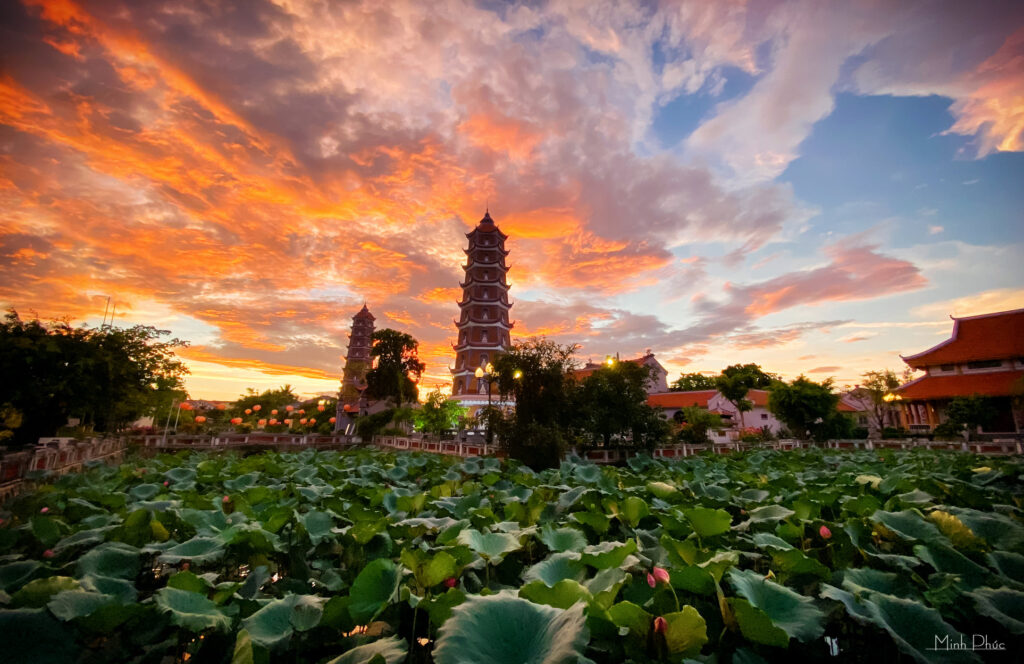Nestled in the peaceful countryside of My Thuy commune, Le Thuy district, Hoang Phuc Pagoda is one of the oldest and most significant religious sites in Quang Binh, with a history spanning over 700 years. The pagoda sits on a vast 10,000 m² area by the banks of the Kien Giang River, about 6 kilometers from the center of Le Thuy district.

Originally named Tri Kien Hermitage, the pagoda’s history was deeply marked by the visit of King Phat Hoang Tran Nhan Tong in 1301 during his southern pilgrimage. He stayed at the hermitage to preach and teach the Buddhist doctrine, renaming it to Kinh Thien Hermitage.
In 1609, while traveling into Thuan Hoa (now part of Central Vietnam), Lord Nguyen Hoang stopped at Kinh Thien Hermitage and, moved by its tranquility, decided to build a larger pagoda on the site, transforming the place into a sacred temple.
The entrance gate of the pagoda features the four words “Tả Quảng Độ Môn,” which experts consider to be an impressive architectural feature that was rare in central Vietnam during that era.
In front of the Tam Bao hall, two towering nine-story Buddha stupas stand as the highlight of the pagoda. In 1918, a Nguyen Dynasty official funded a renovation of the pagoda, adding a screen wall, a main gate, and two side gates.

During the wars against French and American forces, Hoang Phuc Pagoda also served as a gathering place for revolutionary leaders, hiding spots for cadres, and storage for weapons. Despite suffering significant destruction due to the turmoil of history, war, and natural disasters, the pagoda was restored in 2014 in the traditional Vietnamese style. The renovation included the outer and inner gates, the Buddha stupa, the main hall, and other supporting structures, and was officially inaugurated in 2016.
The pagoda also houses valuable ancient artifacts, such as a 19th-century Ngoc Hoang statue, statues of the Bodhisattva Quan The Am, and the Earth Store Bodhisattva. Notably, the pagoda also keeps a wooden statue of a guardian deity and a sacred bell cast during the reign of King Minh Mang.
VIn 2016, the pagoda received a significant gift from the Buddhist community of Myanmar—a relic of the Buddha’s bone, brought from the Shwedagon Pagoda, the most sacred and revered temple in Myanmar.

Due to its cultural and historical significance, Hoang Phuc Pagoda was recognized as a National Historic Site in December 2015. It stands not only as a place for worship but also as a destination for visitors to explore the rich cultural and spiritual heritage of the region and the Vietnamese people.


 Tiếng Việt
Tiếng Việt